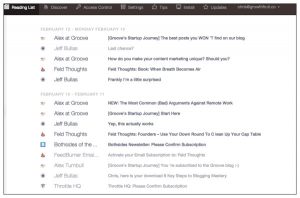Managing employees’ performance is already a tough job. With many employees working at home now, the pressure of that performance management seems bigger than ever. So how can we manage and improve the remote employee’s team performance? Here are 5 secrets from experts to help optimize your remote team’s performance.
1.Give Your Employees More Ownership of Tasks
When your employees are working remotely, it is impossible to check every bit of their work. The organizations are led to giving their employees more autonomy in their tasks. However, this should be done with the purpose of building a stronger company culture and further developing the employee’s performance.
Nathan Hirsch, Founder of Outsource School, explains this further, “see if your employees can own and be responsible for their tasks at the strategic level. This will not only free up the time for the management. It will also engage employees further in their tasks”.
Managers can fall into the trap of managing everyone as it can be nerve-wracking to trust your employee’s performance when your organization is not used to remote work. Thankfully, there are free software such as Google Drive or Loom that can make it easier.
Hirsch explains an additional benefit of task ownership for your employees, “working remotely with your team is the best time to find out who has the leadership potential. Why? If someone can truly own their task, they can be trained to own and train the teams. Certain A players will stand out in this process. Take a note of them”.
2. Use Your Company Culture as an Environment for Success
Managers and leaders play a crucial role when it comes to an employee’s overall workplace experience. Patrick Bensen, Organizational Psychologist, urges leaders to not just focus on the performance. He encourages leaders to focus more on providing employees the right culture for them to thrive in.
“If employees are scared to take initiatives or go an extra mile due to the fear of consequence, that won’t create excellent performances from your employees,” Bensen says. “companies have to train their leaders to promote a “no fear” “no consequence” culture. Encourage employees to take risks. That is how you go from average performance to excellent performance”.
The strategy of enhancing employees’ performance through culture can also help to ensure your employee’s mental health. A research from Harvard Business Review shows that 20% of high performers are affected by burnout. However, if the company culture is not putting employees in high pressure situations, then employees will less likely burnout.
Bensen says, “employees must feel confident their managers truly care about their mental well-being as well as their performance. They should feel safe to share an honest conversation with their leaders about their struggles. Stay in loop as to where they are. When you do, that means you’ll be able to foresee any factors that can enhance or disrupt their performance”.
3. Address Cognitive Dissonance Within Your Employees’ Minds
As a leader, there may have been situations where even though employees are doing the same job, one is performing at much higher level than the others. Many leaders may point to productivity or aptitude behind this performance discrepancy. But Tíaña Mí, advisor for top business disruptors, mentions a very different reasoning behind this.
“Cognitive dissonance refers to any conflict between your actions and your mental, psychological and emotional being. It is one of the most overlooked reasons for poor employee performance,” Mí mentions. “this is what creates performance discrepancies. So when leaders are able to identify this and address that, this creates a huge shift in employees’ performance regardless of whether they work remotely or in person”.
Leaders can choose to either point this out directly to the members of their team, or let the team members figure it out on their own. If choosing to have the team member figure out their cognitive dissonance, the best way to do so is through inquisitive questioning.
Mí elaborates on what inquisitive questioning is about, “sit down with them. And ask them questions on at least on a monthly basis. How did you believe your performance was last week? What was the one thing that you excelled at? What contributed to the improvement or hindrance of the performance? How can we address that influence?”.
4. Set Two Targets
Targets are used as one of the tools to maintain performance standards. Yvette Owo, business growth consultant, suggests to set two targets to best manage the team’s performance.
“Whether a company’s employees are working remotely or in-person, a solid performance management system is a must,” Owo mentions, “we’ve helped companies from Fortune 500’s to start-ups in improving their performance. But multiple target approach worked the best”.
A properly designed performance management system can increase team results by 30% or more and can increase your bottom line. This can also contribute to stronger employee engagement, which is vital for remote working teams.
Owo explains the 3 steps to improve performance, “identify the key activities. Set qualitative and quantitative objectives for these activities. Now divide that up into two levels– minimum performance standards and the actual target with bonuses. Measure, review and give feedback using the performance scorecard”.
5. Focus on Constructive Feedback
Feedback is a double-edged sword – when done incorrectly, it can seriously hurt employees’ productivity and morale. Focusing on the constructive aspect of feedback is absolutely critical. This means giving meaningful and helpful feedback for the receiver on how to improve.
Harrison Kim, co-founder of Pavestep, believes that feedback is the first priority when it comes to performance management, “constructive feedback is not negative feedback well delivered. It’s meaningful and helpful feedback. It is critical for employees to understand how to share constructive feedback”.
Kim provides a simple tip to explain how to share feedback, “use verbs! Feedback should be behavior-based, not trait-based. Our behaviors are typically observable and changeable. Our traits are often not. When employees use verbs in their feedback conversations, instead of adjectives, they will find it easier to focus on the behaviors and deliver feedback that is more constructive”.
Business & Finance Articles on Business 2 Community
(30)
Report Post





